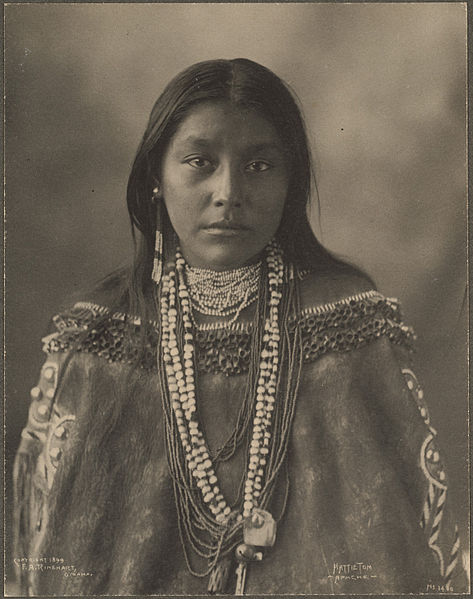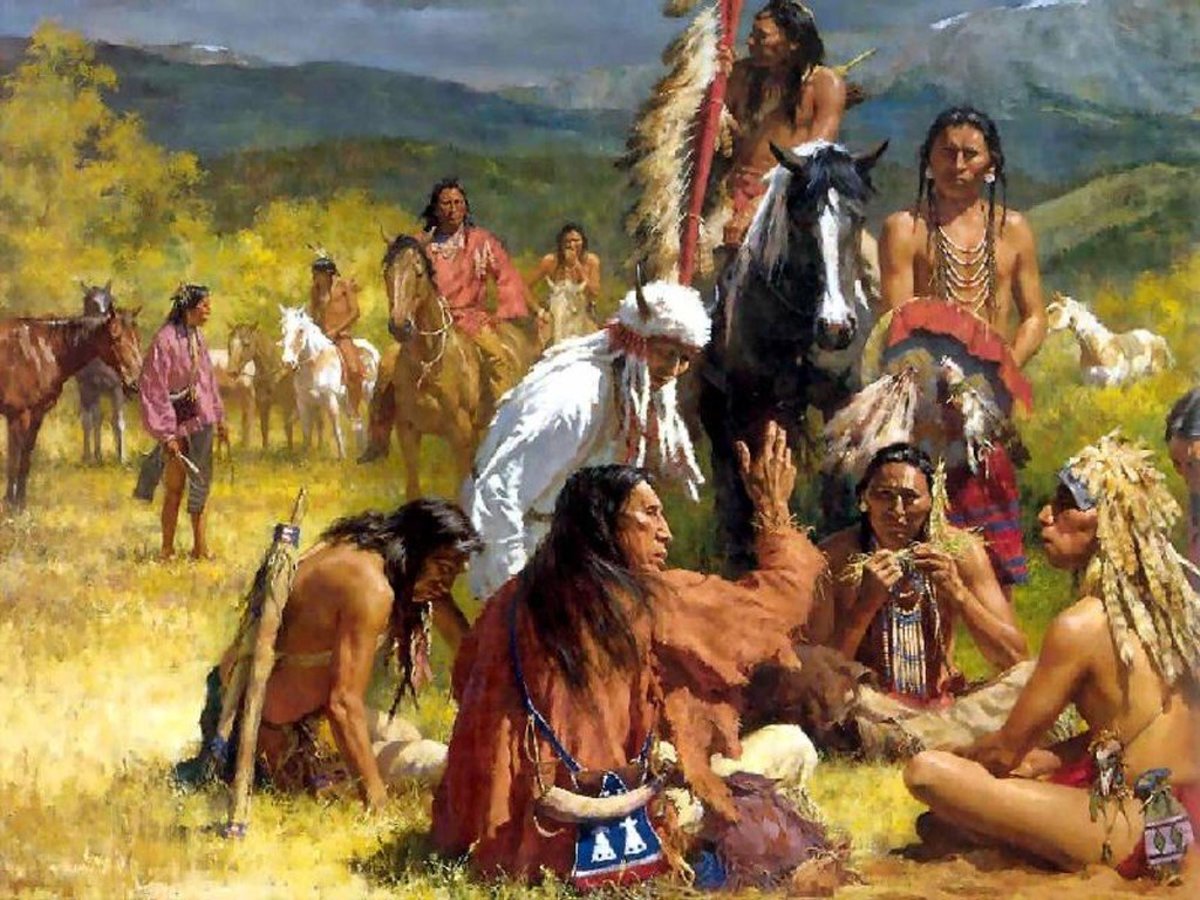The Giants of the Land: Exploring the Largest Native American Tribes in the 1800s
The Giants of the Land: Exploring the Largest Native American Tribes in the 1800s

The 1800s marked a tumultuous period for Native American tribes across North America. As European colonization intensified, tribal lands were encroached upon, traditional ways of life disrupted, and forced removals became a grim reality. Yet, amidst this turmoil, powerful and resilient tribes stood tall, their cultural heritage and societal structures enduring through centuries of hardship. This article delves into the largest Native American tribes of the 1800s, exploring their unique histories, cultural practices, and the challenges they faced during a period of immense change.
1. The Cherokee Nation: Guardians of the Southeastern Woodlands
Related Articles: The Giants of the Land: Exploring the Largest Native American Tribes in the 1800s
- Unveiling the Daily Tapestry of Ojibwe Traditions
- Eagle Symbolism: Native American Spiritual Significance
- Immerse in the Vibrant Tapestry of Indigenous Heritage
- Lakota’s Enigmatic Past: Unveiling the Mysteries of Their Rich History!
- Discover the Rich Heritage of the Knik Tribe & Its Enduring Legacy
The Cherokee Nation, inhabiting the southeastern region of what is now the United States, were one of the most prominent and influential tribes of the 1800s. Their population, estimated to be around 20,000 in the early 1800s, thrived on a complex agricultural system and a rich cultural heritage.
The Cherokee are renowned for their adoption of the written word, developing a syllabary that allowed them to preserve their language and traditions. They also played a significant role in the political landscape of the time, negotiating treaties with the United States government and establishing their own government structure. However, the Cherokee faced immense pressure from westward expansion, culminating in the devastating Trail of Tears, a forced relocation to Oklahoma in the 1830s. Despite these hardships, the Cherokee Nation has persevered, maintaining its cultural identity and advocating for its rights to this day.
2. The Lakota: Warriors of the Great Plains
The Lakota, a powerful tribe inhabiting the Great Plains, were known for their fierce independence and equestrian skills. Their population, estimated to be around 15,000 in the early 1800s, thrived on buffalo hunting, a practice that was deeply intertwined with their cultural and spiritual beliefs.
The Lakota were renowned for their resistance to American expansion, famously led by figures like Sitting Bull and Crazy Horse. The Battle of Little Bighorn in 1876, a resounding victory for the Lakota, stands as a testament to their fighting prowess and unwavering determination to defend their homeland. Despite their valiant efforts, the Lakota were eventually forced onto reservations, their traditional way of life severely impacted. However, their legacy of strength and resilience continues to inspire generations of Native Americans.
3. The Navajo Nation: Weaving a Legacy of Resilience
The Navajo Nation, inhabiting the arid lands of the Southwest, were renowned for their intricate weaving traditions, their complex social structures, and their deep connection to the land. Their population, estimated to be around 15,000 in the early 1800s, thrived on a unique agricultural system that utilized the scarce resources of their environment.
The Navajo faced numerous challenges throughout the 1800s, including conflict with the United States government and forced relocations. The Long Walk, a forced march to Bosque Redondo in the 1860s, stands as a testament to the hardships they endured. Despite these trials, the Navajo Nation has persevered, maintaining its cultural traditions and advocating for its rights. Their resilience and determination serve as a powerful symbol of Native American strength and perseverance.

4. The Creek Nation: Guardians of the Muscogee Language
The Creek Nation, inhabiting the southeastern region of what is now the United States, were known for their strong political organization, their skilled agricultural practices, and their rich cultural traditions. Their population, estimated to be around 12,000 in the early 1800s, thrived on a system of communal living and shared resources.
The Creek Nation faced immense pressure from westward expansion, leading to conflicts with the United States government and the forced removal of many Creek people to Oklahoma. Despite these hardships, the Creek Nation has persevered, maintaining its language, traditions, and cultural identity. Their resilience and determination stand as a testament to the enduring spirit of Native American tribes.
5. The Choctaw Nation: A Legacy of Resilience and Cultural Preservation
The Choctaw Nation, inhabiting the southeastern region of what is now the United States, were known for their sophisticated political system, their skilled agricultural practices, and their strong cultural identity. Their population, estimated to be around 10,000 in the early 1800s, thrived on a system of communal living and shared resources.

The Choctaw Nation faced immense pressure from westward expansion, leading to conflicts with the United States government and the forced removal of many Choctaw people to Oklahoma. The Trail of Tears, a devastating forced relocation in the 1830s, stands as a testament to the hardships they endured. Despite these trials, the Choctaw Nation has persevered, maintaining its cultural traditions and advocating for its rights. Their resilience and determination serve as a powerful symbol of Native American strength and perseverance.
6. The Seminole Nation: Warriors of the Florida Everglades
The Seminole Nation, inhabiting the Florida Everglades, were known for their fierce independence, their resistance to American expansion, and their unique cultural practices. Their population, estimated to be around 5,000 in the early 1800s, thrived on a system of hunting, fishing, and agriculture adapted to the unique environment of the Everglades.
The Seminole Nation fought multiple wars against the United States government, resisting attempts to relocate them from their ancestral lands. The Seminole Wars, lasting for decades, stand as a testament to their fierce determination and unwavering resistance. Although eventually forced onto reservations, the Seminole Nation has persevered, maintaining its cultural traditions and advocating for its rights. Their legacy of resistance and resilience continues to inspire generations of Native Americans.
7. The Blackfeet Nation: Masters of the Plains

The Blackfeet Nation, inhabiting the northern Great Plains, were known for their equestrian skills, their buffalo hunting prowess, and their strong cultural traditions. Their population, estimated to be around 5,000 in the early 1800s, thrived on a nomadic lifestyle, following the buffalo herds across the vast plains.
The Blackfeet Nation faced numerous challenges throughout the 1800s, including conflict with the United States government and the forced relocation to reservations. Despite these hardships, the Blackfeet Nation has persevered, maintaining its cultural identity and advocating for its rights. Their resilience and determination serve as a powerful symbol of Native American strength and perseverance.
8. The Comanche Nation: Lords of the Southern Plains
The Comanche Nation, inhabiting the southern Great Plains, were known for their fierce independence, their equestrian skills, and their reputation as skilled warriors. Their population, estimated to be around 5,000 in the early 1800s, thrived on a nomadic lifestyle, following the buffalo herds across the vast plains.
The Comanche Nation faced numerous challenges throughout the 1800s, including conflict with the United States government and the forced relocation to reservations. Despite these hardships, the Comanche Nation has persevered, maintaining its cultural identity and advocating for its rights. Their resilience and determination serve as a powerful symbol of Native American strength and perseverance.
9. The Cheyenne Nation: Warriors of the Northern Plains
The Cheyenne Nation, inhabiting the northern Great Plains, were known for their equestrian skills, their buffalo hunting prowess, and their strong cultural traditions. Their population, estimated to be around 4,000 in the early 1800s, thrived on a nomadic lifestyle, following the buffalo herds across the vast plains.
The Cheyenne Nation faced numerous challenges throughout the 1800s, including conflict with the United States government and the forced relocation to reservations. The Battle of Little Bighorn, a resounding victory for the Cheyenne and their allies, stands as a testament to their fighting prowess and unwavering determination to defend their homeland. Despite their valiant efforts, the Cheyenne were eventually forced onto reservations, their traditional way of life severely impacted. However, their legacy of strength and resilience continues to inspire generations of Native Americans.
10. The Arapaho Nation: Guardians of the Sacred Mountains
The Arapaho Nation, inhabiting the central Great Plains, were known for their equestrian skills, their buffalo hunting prowess, and their strong cultural traditions. Their population, estimated to be around 4,000 in the early 1800s, thrived on a nomadic lifestyle, following the buffalo herds across the vast plains.
The Arapaho Nation faced numerous challenges throughout the 1800s, including conflict with the United States government and the forced relocation to reservations. Despite these hardships, the Arapaho Nation has persevered, maintaining its cultural identity and advocating for its rights. Their resilience and determination serve as a powerful symbol of Native American strength and perseverance.
The Legacy of Resilience
The largest Native American tribes of the 1800s faced a period of immense change and upheaval. Despite the challenges of westward expansion, forced removals, and the erosion of their traditional ways of life, these tribes have persevered, maintaining their cultural identities and advocating for their rights. Their stories are a testament to the enduring spirit of Native American peoples, their resilience in the face of adversity, and their ongoing struggle for self-determination.
FAQs about the Largest Native American Tribes in the 1800s
1. What were the major challenges faced by Native American tribes in the 1800s?
The major challenges faced by Native American tribes in the 1800s included:
- Westward Expansion: The relentless expansion of European colonization encroached upon tribal lands, displacing Native Americans from their ancestral homes and disrupting their traditional way of life.
- Forced Removals: The United States government implemented policies of forced relocation, such as the Trail of Tears, which forcibly removed Native Americans from their homelands and often resulted in immense hardship and loss of life.
- Disease: European diseases, such as smallpox and measles, ravaged Native American populations, decimating their numbers and weakening their communities.
- Cultural Suppression: The United States government actively suppressed Native American cultures and traditions, attempting to assimilate Native Americans into mainstream American society.
2. How did Native American tribes resist these challenges?
Native American tribes resisted these challenges through a variety of means, including:
- Armed Resistance: Many tribes fought back against European colonization and the encroachment of their lands, engaging in armed conflicts with the United States government.
- Political Negotiations: Some tribes attempted to negotiate with the United States government, seeking to protect their rights and preserve their lands.
- Cultural Preservation: Native American tribes continued to practice their traditional ways of life, preserving their languages, ceremonies, and cultural practices.
- Legal Challenges: Native American tribes have sought legal redress for the injustices they have faced, challenging government policies and fighting for their rights in court.
3. What is the legacy of these tribes today?
The legacy of these tribes continues to shape the lives of Native Americans today. They have fought for and achieved recognition of their tribal sovereignty, and they continue to advocate for their rights and cultural preservation. They are actively engaged in the fight for environmental justice, economic development, and the protection of their sacred lands. The resilience and determination of these tribes serve as an inspiration to all who believe in the power of cultural preservation, self-determination, and the fight for justice.

Closure
Thus, we hope this article has provided valuable insights into The Giants of the Land: Exploring the Largest Native American Tribes in the 1800s. We thank you for taking the time to read this article. See you in our next article!